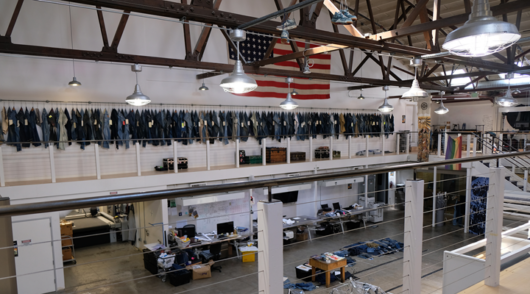 Tech-savvy and price conscious millennials – who will represent 46 per cent of the workforce by 2020 – have been changing the world of retail in many unexpected ways, according to a study from Zebra Technologies.
Tech-savvy and price conscious millennials – who will represent 46 per cent of the workforce by 2020 – have been changing the world of retail in many unexpected ways, according to a study from Zebra Technologies.
The first of the truly digital generations, millennials are exposed to an abundant amount of information at their disposal at all times, making them more informed but also more demanding, according to Zebra’s latest Retail Shopper Study. The tech firm’s research found that 53 per cent of millennials think they are better connected than store associates while 42 per cent of Gen X shoppers feel the same way.
“Retailers today really need to ensure their associates are more informed than ever before,” said Tom Christodoulou, ANZ sales director for Zebra Technologies.
Christodoulou said even while in-store, the millennial customer is window-shopping at multiple platforms, comparing prices on his or her smartphone simultaneously.
“This is where the need for a complete omnichannel experience plays a vital role, to avoid variations in prices and to ensure a seamless experience for customers shopping online or in-store,” he said.
One way to connect with millenials, according to Christodoulou, would be through push/cross promotional activity and loyalty programs. Retailers could use technologies like Bluetooth for identifying loyalty customers as soon as they walk through the doors, notifying shop associates about the customer’s expectations in advance to help them deliver the desired shopping experience.
Another way to avoid losing a millennial customer, according to Christodoulou, is to avoid the issue of out-of-stocks.
“Shoppers want quick, friction-free product searches and purchases,” he said. “Inventory accuracy is key to this; retailers need to address this issue with a solid stock fulfilment model.”
“Often, retailers are able to provide stock to customers more quickly digitally where it can be dynamically routed to the customer directly from suppliers without warehousing items at all,” Christodoulou said. “But overall integration of the digital model and physical store model is key to avoiding such issues.”
Christodoulou added it is also common for retailers to combat such issues with discounts or alternative fulfillment options, such as ship to home, which work well for re-instilling customer loyalty.
In today’s age of endless choices, Christodoulou said retailers should also address the issue of fast or free delivery.
According to Zebra’s study, 66 per cent of shoppers want next-day or same-day delivery, but, for 27 per cent of those respondents, it shows not everyone is willing to pay for it.
“In Australia, same-day delivery has shallow roots but an enthusiastic customer base,” Christodoulou said.
“Same-day delivery means retailers must maintain sufficient inventory for each area being serviced,” he said. “Mostly, shoppers value free-shipping more than same-day delivery, but mainly they simply want transparency about when the goods are likely to arrive.”
Zebra’s recent study also shows customers want a variety of fulfillment options, indicating that 80 per cent of those surveyed purchase items in-store and either take them home or ship from store to home. Shoppers are also taking advantage of other fulfillment options, such as buy online – ship to home (64 per cent), buy online – pick up in-store (34 per cent) and buy online – ship to alternative location (15 per cent).
In a world of mobile technology and last mile delivery, consumers’ expectations are soaring and they are spoiled for choice. They want more, and they want it for less, but not only that, they want multiple options too, according to Christodoulou.
“Ultimately, all of these trends mean retailers need to curate an ideal mix of options to keep customers happy,” he said.
Access exclusive analysis, locked news and reports with Inside Retail Weekly. Subscribe today and get our premium print publication delivered to your door every week.





